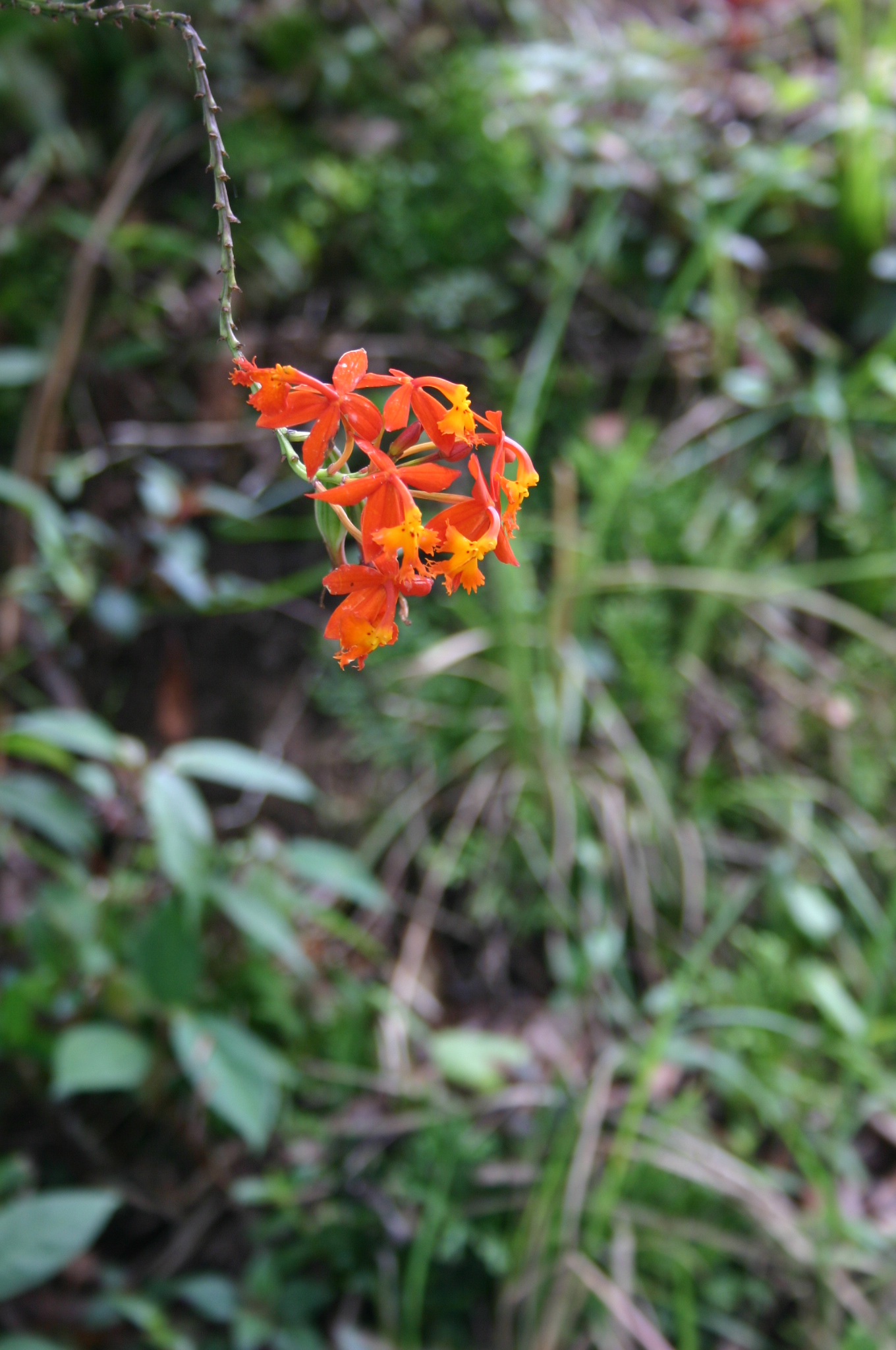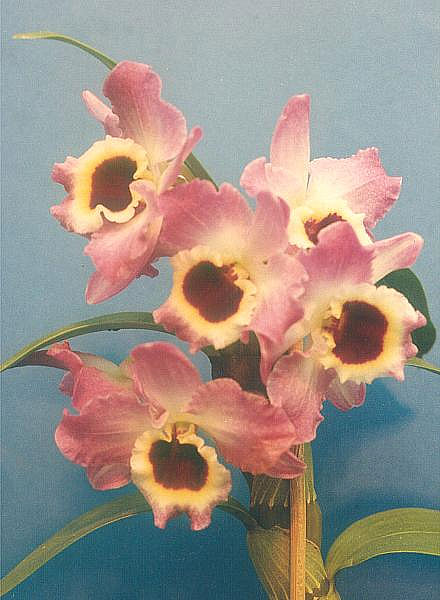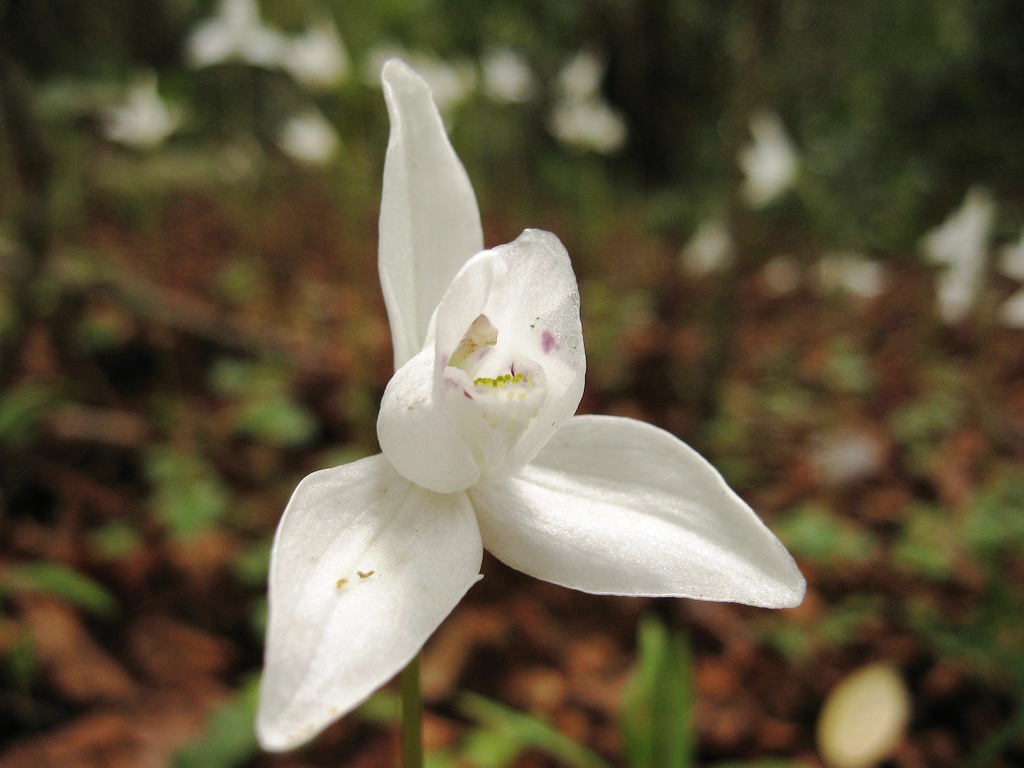|
Orchids
Orchids are plants that belong to the family Orchidaceae (), a diverse and widespread group of flowering plants with blooms that are often colourful and fragrant. Orchids are cosmopolitan plants that are found in almost every habitat on Earth except glaciers. The world's richest diversity of orchid genera and species is in the tropics. Orchidaceae is one of the two largest families of flowering plants, the other being the Asteraceae. It contains about 28,000 currently accepted species in 702 genera. The Orchidaceae family encompasses about 6–11% of all species of seed plants. The largest genera are ''Bulbophyllum'' (2,000 species), ''Epidendrum'' (1,500 species), ''Dendrobium'' (1,400 species) and '' Pleurothallis'' (1,000 species). It also includes ''Vanilla'' (the genus of the vanilla plant), the type genus '' Orchis'', and many commonly cultivated plants such as '' Phalaenopsis'' and '' Cattleya''. Moreover, since the introduction of tropical species into cultivation ... [...More Info...] [...Related Items...] OR: [Wikipedia] [Google] [Baidu] |
Orchid High Resolution
Orchids are plants that belong to the family (biology), family Orchidaceae (), a diverse and widespread group of flowering plants with blooms that are often colourful and fragrant. Orchids are cosmopolitan distribution, cosmopolitan plants that are found in almost every habitat (ecology), habitat on Earth except glaciers. The world's species richness, richest diversity of orchid genera and species is in the tropics. Orchidaceae is one of the two largest families of flowering plants, the other being the Asteraceae. It contains about 28,000 currently accepted species in 702 genera. The Orchidaceae family encompasses about 6–11% of all species of seed plants. The largest genera are ''Bulbophyllum'' (2,000 species), ''Epidendrum'' (1,500 species), ''Dendrobium'' (1,400 species) and ''Pleurothallis'' (1,000 species). It also includes ''Vanilla (genus), Vanilla'' (the genus of the Vanilla planifolia, vanilla plant), the type genus ''Orchis'', and many commonly cultivated plants s ... [...More Info...] [...Related Items...] OR: [Wikipedia] [Google] [Baidu] |
Cattleya
''Cattleya'' () is a genus of orchids from Costa Rica south to Argentina. The genus is abbreviated C in trade journals. Description Epiphyte, Epiphytic or terrestrial orchids with cylindrical rhizome from which the fleshy noodle-like roots grow. Pseudobulbs can be conical, spindle-shaped or cylindrical; with upright growth; one or two leaves growing from the top of them. The leaves can be oblong, lanceolate or elliptical, somewhat fleshy, with smooth margin. The inflorescence is a terminal raceme with few or several flowers. Flowers have sepals and petals free from each other; the Labellum (botany), lip or labellum (lowermost petal), usually has a different coloration and shape from the rest of the flower and covers in part the Column (botany), flower column forming a tube. There are four pollinia (bag-like organs that contain pollen). The fruit is a capsule with many small seeds.Schweinfurth, C., "Orchidaceae, Orchids of Peru", ''Fieldiana, Botany'' 30(3): 535 Taxonomy The ... [...More Info...] [...Related Items...] OR: [Wikipedia] [Google] [Baidu] |
Phalaenopsis
''Phalaenopsis'' (), also known as moth orchids, is a genus of about seventy species of plants in the family Orchidaceae. Orchids in this genus are monopodial epiphytes or lithophytes with long, coarse roots, short, leafy stems and long-lasting, flat flowers arranged in a flowering stem that often branches near the end. Orchids in this genus are native to Asia, New Guinea, and Australia, but mostly occur in Indonesia and the Philippines. Description Orchids in the genus ''Phalaenopsis'' are monopodial epiphytic, sometimes lithophytic herbs with long, coarse roots with pneumatodes (which allow for gaseous exchange of the photosynthetic roots), and short leafy stems hidden by overlapping leaf bases. The leaves are usually arranged in two rows, relatively large and leathery, oblong to elliptic and sometimes succulent. A few to many, small to large, long-lasting, flat, often fragrant flowers are arranged on erect to hanging racemes or panicles. The sepals and petals are fre ... [...More Info...] [...Related Items...] OR: [Wikipedia] [Google] [Baidu] |
Epidendrum
''Epidendrum'' , abbreviated Epi in the horticultural trade, is a large neotropical genus of the orchid family. With more than 1,500 species, some authors describe it as a mega-genus. The genus name (from Greek language, Greek ''επί, epi'' and ''δένδρον, dendron'', "upon trees") refers to its epiphyte, epiphytic growth habit. When Carl Linnaeus named this genus in 1763, he included in this genus all the epiphytic orchids known to him. Although few of these orchids are still included in the genus ''Epidendrum'', some species of ''Epidendrum'' are nevertheless not epiphytic. Distribution and ecology They are native to the tropics and subtropics, subtropical regions of the Americas, American continents, from North Carolina to Argentina. Their habitat can be epiphyte, epiphytic, terrestrial (such as ''Epidendrum fulgens, E. fulgens''), or even lithophytic (growing on bare rock, such as ''Epidendrum calanthum, E. calanthum'' and ''Epidendrum saxatile, E. saxa ... [...More Info...] [...Related Items...] OR: [Wikipedia] [Google] [Baidu] |
Cypripedioideae
Cypripedioideae is a subfamily of orchids commonly known as lady's slipper orchids, lady slipper orchids or slipper orchids. Cypripedioideae includes the genera ''Cypripedium, Mexipedium, Paphiopedilum, Phragmipedium'' and '' Selenipedium''. They are characterised by the slipper-shaped pouches (modified labella) of the flowers – the pouch traps insects so they are forced to climb up past the staminode, behind which they collect or deposit pollinia, thus fertilizing the flower. There are approximately 165 species in the subfamily. Description All representatives of the Cypripedioideae are perennial, herbaceous plants. The fleshy roots sometimes possess a veil. The leaves are arranged spirally or in two rows, the shoot is slender or compressed. In the bud, the leaves are rolled and the leaf blade is plikat (folded) or the leaves are folded in the bud, smooth and leathery. There is no dividing tissue between leaf and shoot. The inflorescence of the Cypripedioideae are term ... [...More Info...] [...Related Items...] OR: [Wikipedia] [Google] [Baidu] |
Apostasioideae
Apostasioideae is one of the five subfamilies recognised within the orchid family, Orchidaceae. Only two genera, '' Neuwiedia'' and ''Apostasia'', and 15 species, are recognised within the Apostasioideae in contrast to the other orchid subfamilies which are highly species rich. The Apostasioideae are generally considered a basal lineage within the orchids based on molecular data and flower structure. All other orchid subfamilies with the exception of the Cypripedioideae are monandrous (possessing a single stamen), however Apostasioid orchids have 3 stamens. As with all basal or 'primitive' groups, extant Extant or Least-concern species, least concern is the opposite of the word extinct. It may refer to: * Extant hereditary titles * Extant literature, surviving literature, such as ''Beowulf'', the oldest extant manuscript written in English * Exta ... species within Apostasioideae do not represent direct ancestors of the other subfamilies, they simply share the same common a ... [...More Info...] [...Related Items...] OR: [Wikipedia] [Google] [Baidu] |
Bulbophyllum
''Bulbophyllum'' is a genus of mostly Epiphyte, epiphytic and Lithophyte, lithophytic orchids in the Family (biology), family Orchidaceae. It is the largest genus in the orchid family and one of the List of the largest genera of flowering plants, largest genera of flowering plants with more than 2,000 species, exceeded in number only by ''Astragalus (plant), Astragalus''. These orchids are found in diverse habitats throughout most of the warmer parts of the world including Africa, southern Asia, Latin America, the West Indies, and various islands in the Indian Ocean, Indian and Pacific Oceans. Orchids in this genus have thread-like or fibrous roots that creep over the surface of trees or rocks or hang from branches. The stem is divided into a rhizome and a pseudobulb, a feature that distinguished this genus from ''Dendrobium''. There is usually only a single leaf at the top of the pseudobulb and from one to many flowers are arranged along an unbranched flowering stem that arises fr ... [...More Info...] [...Related Items...] OR: [Wikipedia] [Google] [Baidu] |
Dendrobium
''Dendrobium'' is a genus of mostly Epiphyte, epiphytic and Lithophyte, lithophytic orchids in the Family (biology), family Orchidaceae. It is a very large genus, containing more than 1,800 species that are found in diverse habitats throughout much of South Asia, south, East Asia, east and southeast Asia, including China, Japan, India, the Philippines, Indonesia, Australia, New Guinea, Vietnam and many of the islands of the Pacific Islands, Pacific. Orchids in this genus have roots that creep over the surface of trees or rocks, rarely having their roots in soil. Up to six leaves develop in a tuft at the tip of a shoot and from one to a large number of flowers are arranged along an unbranched flowering stem. Several attempts have been made to separate ''Dendrobium'' into smaller genera, but most have not been accepted by the World Checklist of Selected Plant Families. Description ''Dendrobium'' species are mostly Epiphyte, epiphytic, or Lithophyte, lithophytic although a few spec ... [...More Info...] [...Related Items...] OR: [Wikipedia] [Google] [Baidu] |
Epidendroideae
Epidendroideae is a subfamily of plants in the orchid family, Orchidaceae. Epidendroideae is larger than all the other orchid subfamilies together, comprising more than 15,000 species in 576 genera. Most epidendroid orchids are tropical epiphytes, typically with pseudobulbs. There are, however, some terrestrials such as '' Epipactis'' and even a few myco-heterotrophs, which are parasitic upon mycorrhizal fungi. They typically contain the remaining orchids with a single, fertile anther ( = monandrous), which is also fully incumbent ( = strongly convex) to suberect (= ascending towards the edges). The anther form arises from column elongation or, as in the vandoids, from early anther bending. The incumbent anther forms a right angle with the column axis or is pointed backward in many genera. Most have hard pollinia, i.e. a mass of waxy pollen or of coherent pollen grains. The pollinia are with caudicle and viscidium or without. The stigma are entire or three-lobed; a beak is ... [...More Info...] [...Related Items...] OR: [Wikipedia] [Google] [Baidu] |
Orchidoideae
The Orchidoideae, or the orchidoid orchids, are a subfamily of the orchid family (Orchidaceae) that contains around 3630 species. Species typically have a single (monandrous), fertile anther which is erect and basitonic. Description The subfamily Orchidoideae and the previously recognized subfamily Spiranthoideae are considered the closest allies in the natural group of the monandrous orchids because of several generally shared characters: * a shared terrestrial plant, terrestrial habit * sectile (capable of being severed) or granular pollinium, pollinia * erect anthers. Taxonomy Phylogeny of the Orchidoideae is volatile and still subject to change. Historically, the Orchidoideae have been partitioned into up to 6 Tribe (biology), tribes, including Orchideae, Diseae, Cranichideae, Chloraeinae, Chloraeeae, Diurideae, and Codonorchideae. However, the most recent molecular phylogenetics analysis led by Chase et al. in 2015 and subsequently by Chen et al. in 2017 indicates that t ... [...More Info...] [...Related Items...] OR: [Wikipedia] [Google] [Baidu] |
Orchis
''Orchis'' is a genus in the orchid family (Orchidaceae), occurring mainly in Europe and Maghreb, Northwest Africa, and ranging as far as Tibet, Mongolia, and Xinjiang. The name is from the Ancient Greek ὄρχις ''orchis'', meaning "testicle", from the appearance of the paired subterranean Glossary of botanical terms#tuberoid, tuberoids.Alberta Native Plant Council Description These terrestrial orchids have tuber, root tubers instead of pseudobulbs. They are extremely diverse in appearance. They produce an erect Plant stem, stem. The inflorescence is a cylindrical to globular Raceme, spike, long, with yellow, red to purple flowers. They start flowering at the base, slowly progressing upwards, except for the Monkey orchid (''Orchis simia''), which flowers in reverse order. The original genus ''Orchis'' used to contain more than 1,300 names. Since it was Polyphyly, polyphyletic, it has been divided by Pridgeon et al., into several new genera (see Reference): ''Ponerorchis ... [...More Info...] [...Related Items...] OR: [Wikipedia] [Google] [Baidu] |
Hybrid (biology)
In biology, a hybrid is the offspring resulting from combining the qualities of two organisms of different varieties, subspecies, species or genera through sexual reproduction. Generally, it means that each cell has genetic material from two different organisms, whereas an individual where some cells are derived from a different organism is called a chimera. Hybrids are not always intermediates between their parents such as in blending inheritance (a now discredited theory in modern genetics by particulate inheritance), but can show hybrid vigor, sometimes growing larger or taller than either parent. The concept of a hybrid is interpreted differently in animal and plant breeding, where there is interest in the individual parentage. In genetics, attention is focused on the numbers of chromosomes. In taxonomy, a key question is how closely related the parent species are. Species are reproductively isolated by strong barriers to hybridization, which include genetic and morph ... [...More Info...] [...Related Items...] OR: [Wikipedia] [Google] [Baidu] |







